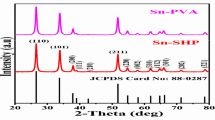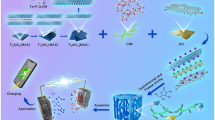Abstract
Multiwalled carbon nanotubes (MWNTs) were modified by imidazole-based ionic liquids with different alkyl groups. The modified support samples were characterized by scanning transmission electron microscopy, Raman spectra, thermogravimetric analyses, and X-ray photoelectron spectroscopy. The samples were used to immobilize Candida antarctic lipase (CALB) and the influence of alkyl chain length of ionic liquids on enzymatic properties was investigated by the hydrolysis reaction of triacetin. The results revealed that functionalized ionic liquids modification did not destroy the structure of MWNTs. Compared with the immobilized CALB on MWNTs, the immobilized CALB on novel carriers all exhibited higher activity, thermal stability, and reusability. Especially, the activity of MWNTs-IL (8C)-CALB improved 15.23-folds than MWNTs-CALB, meanwhile, after incubation at 70 °C for 20 min, residual enzyme activity of MWNTs-IL (8C)-CALB was 46% of the initial activity, while MWNTs-CALB already lost all activity. Besides, MWNTs-IL (8C)-CALB retained 64.5% of its initial activity after 4 cycles, while MWNTs-CALB retained only 2.12%.

ᅟ







Similar content being viewed by others
References
Kohler, V., & Turner, N. J. (2015). Artificial concurrent catalytic processes involving enzymes. Chemical Communications, 51, 450–464.
Bornscheuer, U. T., Huisman, G. W., Kazlauskas, R. J., Lutz, S., Moore, J. C., & Robins, K. (2012). Engineering the third wave of biocatalysis. Nature, 485, 185–194.
Reetz, M. T. (2013). Biocatalysis in organic chemistry and biotechnology: Past, present, and future. Journal of the American Chemical Society, 135, 12480–12496.
Manoel, E. A., dos Santos, J. C. S., Freire, D. M. G., Rueda, N., & Fernandez-Lafuente, R. (2015). Immobilization of lipases on hydrophobic supports involves the open form of the enzyme. Enzyme and Microbial Technology, 71, 53–57.
Rodrigues, R. C., Ortiz, C., Berenguer-Murcia, A., Torres, R., & Fernandez-Lafuente, R. (2013). Modifying enzyme activity and selectivity by immobilization. Chemical Society Reviews, 42, 6290–6307.
Sheldon, R. A., & van Pelt, S. (2013). Enzyme immobilisation in biocatalysis: why, what and how. Chemical Society Reviews, 42, 6223–6235.
Carlsson, N., Gustafsson, H., Thorn, C., Olsson, L., Holmberg, K., & Akerman, B. (2014). Enzymes immobilized in mesoporous silica: a physical-chemical perspective. Advances in Colloid and Interface Science, 205, 339–360.
Dicosimo, R., Mcauliffe, J., Poulose, A. J., & Bohlmann, G. (2013). Industrial use of immobilized enzymes. Chemical Society Reviews, 42, 6437–6474.
Liu, Q., Tian, J. Q., Cui, W., Jiang, P., Cheng, N. Y., Asiri, A. M., & Sun, X. P. (2014). Carbon nanotubes decorated with CoP nanocrystals: a highly active non-noble-metal nanohybrid electrocatalyst for hydrogen evolution. Angewandte Chemie International Edition, 53, 6710–6714.
Mehra, N. K., Mishra, V., & Jain, N. K. (2014). A review of ligand tethered surface engineered carbon nanotubes. Biomaterials, 35, 1267–1283.
Wan, X. M., Zhang, C., Yu, D. H., Huang, H., & Hu, Y. (2015). Enzyme immobilized on carbon nanotubes. Progress in Chemistry, 27, 1251–1259.
Zhao, H. (2016). Protein stabilization and enzyme activation in ionic liquids: specific ion effects. Journal of Chemical Technology and Biotechnology, 91, 25–50.
Gao, W. W., Zhang, F. X., Zhang, G. X., & Zhou, C. H. (2015). Key factors affecting the activity and stability of enzymes in ionic liquids and novel applications in biocatalysis. Biochemical Engineering Joural, 99, 67–84.
van Rantwijk, F., & Sheldon, R. A. (2007). Biocatalysis in ionic liquids. Chemical Reviews, 107, 2757–2785.
Zou, B., Hu, Y., Cui, F. J., Jiang, L., Yu, D. H., & Huang, H. (2014). Effect of surface modification of low cost mesoporous SiO2 carriers on the properties of immobilized lipase. Journal of Colloid and Interface Science, 417, 210–216.
Zou, B., Hu, Y., Yu, D. H., Xia, J. J., Tang, S. S., Liu, W. M., & Huang, H. (2010). Immobilization of porcine pancreatic lipase onto ionic liquid modified mesoporous silica SBA-15. Biochemical Engineering Journal, 53, 150–153.
Hu, Y., Tang, S. S., Jiang, L., Zou, B., Yang, J., & Huang, H. (2012). Immobilization of Burkholderia cepacia lipase on functionalized ionic liquids modified mesoporous silica SBA-15. Process Biochemistry, 47, 2291–2299.
Zou, B., Hu, Y., Jiang, L., Jia, R., & Huang, H. (2013). Mesoporous material SBA-15 modified by amino acid ionic liquid to immobilize lipase via ionic bonding and cross-linking method. Industrial & Engineering Chemistry Research, 52, 2844–2851.
Wu, Q., Soni, P., & Reetz, M. T. (2013). Laboratory evolution of Enantiocomplementary Candida antarctica lipase B mutants with broad substrate scope. Journal of the American Chemical Society, 135, 1872–1781.
Boros, Z., Weiser, D., Márkus, M., Abaháziová, E., Magyar, Á., Tomin, A., Koczka, B., Kovács, P., & Poppe, L. (2013). Hydrophobic adsorption and covalent immobilization of Candida antarctica lipase B on mixed-function-grafted silica gel supports for continuous-flow biotransformations. Process Biochemistry, 48, 1039–1047.
Tan, H. S., Feng, W., & Ji, P. J. (2012). Lipase immobilized on magnetic multi-walled carbon nanotubes. Bioresource Technology, 115, 172–176.
Park, M. J., Lee, J. K., Lee, B. S., Lee, Y. W., Choi, I. S., & Lee, S. G. (2006). Covalent modification of multiwalled carbon nanotubes with imidazolium-based ionic liquids: effect of anions on solubility. Chemistry of Materials, 18, 1546–1551.
Bradford, M. M. (1976). A rapid and sensitive method for the quantitation of microgram quantities of protein utilizing the principle of protein-dye binding. Analytical Biochemistry, 72, 248–254.
Pourjavadi, A., & Doulabi, M. (2014). Preparation and evaluation of a polymeric gel containing ionic liquid-functionalized MWNTs as a novel class of organic solvent absorbent. Journal of Polymer Science Part A: Polymer Chemistry, 52, 3166–3172.
Yu, B., Zhou, F., Mu, Z. G., Liang, Y. M., & Liu, W. M. (2006). Tribological properties of ultra-thin ionic liquid films on single-crystal silicon wafers with functionalized surfaces. Tribology International, 39, 879–887.
Rastian, Z., Khodadadi, A. A., Guo, Z., Vahabzadeh, F., & Mortazavi, Y. (2016). Plasma functionalized multiwalled carbon nanotubes for immobilization of Candida antarctica lipase B: production of biodiesel from methanolysis of rapeseed oil. Applied Biochemistry and Biotechnology, 178, 974–989.
Lu, S., He, J., & Guo, X. (2010). Architecture and performance of mesoporous silica-lipase hybrids via non-covalent interfacial adsorption. AICHE Journal, 56, 506–514.
Cao, X., Zhang, R., Tan, W. M., Wei, C., Wang, J., Liu, Z. M., Chen, K. Q., & Ouyang, P. K. (2016). Plasma treatment of multi-walled carbon nanotubes for lipase immobilization. Korean Journal of Chemical Engineering, 33, 1653–1658.
Gao, S. L., Wang, W. W., Wang, Y. J., Luo, G. S., & Dai, Y. Y. (2010). Influence of alcohol treatments on the activity of lipases immobilized on methyl-modified silica aerogels. Bioresource Technology, 101, 7231–7238.
Kaar, J. L., Jesionowski, A. M., Berberich, J. A., Moulton, R., & Russell, A. J. (2003). Impact of ionic liquid physical properties on lipase activity and stability. Journal of the American Chemical Society, 125, 4125–4131.
Acknowledgments
This work was financially supported by the National Natural Science Foundation of China (No. 21676143), Qing Lan Project, and the National Science Fund for Distinguished Young Scholars (No. 21225626).
Author information
Authors and Affiliations
Corresponding author
Rights and permissions
About this article
Cite this article
Wan, X., Tang, S., Xiang, X. et al. Immobilization of Candida antarctic Lipase B on Functionalized Ionic Liquid Modified MWNTs. Appl Biochem Biotechnol 183, 807–819 (2017). https://doi.org/10.1007/s12010-017-2465-9
Received:
Accepted:
Published:
Issue Date:
DOI: https://doi.org/10.1007/s12010-017-2465-9




